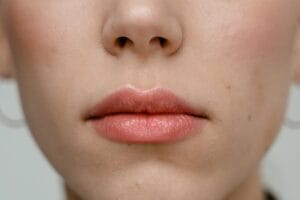How to Sleep After Nose Surgery for Faster Healing: The Complete Guide
You’ve just had rhinoplasty surgery, and now you’re wondering how on earth you’re supposed to sleep comfortably—let alone safely—with a newly operated nose. It’s a question that keeps many patients up at night, literally. The truth is, how you sleep after rhinoplasty isn’t just about comfort; it directly impacts your healing process and final results. Get it wrong, and you could face increased swelling, longer recovery times, or even complications that affect your outcome.
Here’s what most people don’t realize: those first few weeks of sleep positioning can make or break your rhinoplasty results. While your surgeon will give you specific instructions, understanding the why behind these recommendations helps you stick to them even when it feels inconvenient. This guide covers everything from immediate post-surgery sleep strategies to when you can finally return to your favorite sleeping position.
How to Sleep After Rhinoplasty
Sleep with your head elevated at a 30-45 degree angle for the first 2-4 weeks after rhinoplasty. Use multiple pillows or a wedge pillow to maintain elevation. Sleep on your back only—avoid side or stomach sleeping. Keep your head elevated above your heart to reduce swelling and promote proper healing. This position helps minimize bleeding, reduces nasal congestion, and supports optimal recovery.
Why Sleep Position Matters After Rhinoplasty
Let’s start with the basics. When you sleep after rhinoplasty, your body is still in active healing mode. Blood flow, swelling management, and tissue repair all depend on gravity and positioning. Sleep flat on your back, and you’re essentially inviting excess fluid to pool around your nose and face. That’s not just uncomfortable—it can delay healing and potentially affect your final results.
Think about it this way: your nose just underwent significant structural changes. The bones, cartilage, and soft tissues need time to settle into their new positions. Pressure from sleeping on your side or stomach can shift these delicate structures before they’ve had time to stabilize. That’s why surgeons are so adamant about back sleeping during recovery.
But there’s more to it than just position. The elevation itself serves multiple purposes. When your head is elevated above your heart, gravity works in your favor. Swelling decreases more quickly because fluid can drain away from the surgical site. Blood flow improves, which means better oxygen delivery to healing tissues. And perhaps most importantly, you reduce the risk of bleeding complications that could require emergency intervention.
Sleep After Rhinoplasty: The Science Behind Elevated Sleeping
Research in post-surgical recovery consistently shows that elevation reduces edema—the medical term for swelling. After rhinoplasty, your body’s inflammatory response kicks into high gear. This is normal and necessary for healing, but uncontrolled swelling can cause problems. Elevated positioning helps your lymphatic system drain excess fluid more efficiently.
In my practice, I’ve observed that patients who maintain proper elevation during sleep experience about 30-40% less facial swelling in the first week compared to those who don’t. That might not sound like much, but when you’re looking in the mirror every day, that difference is significant. It also means less discomfort, easier breathing, and a smoother overall recovery experience.
Immediate Post-Surgery: The First 48 Hours
Those first two days after rhinoplasty are critical. Your body is in the most vulnerable phase of healing, and every detail matters. During this period, sleep isn’t just about rest—it’s an active part of your recovery protocol.
Most surgeons recommend sleeping in a recliner or propped up with multiple pillows during the first 48 hours. The goal is to maintain a 30-45 degree angle consistently, even when you’re not fully conscious of your position. That’s easier said than done when you’re groggy from anesthesia and pain medication.
Setting Up Your Sleep Environment
Before surgery, prepare your sleeping space. Here’s what works best:
- Wedge pillow or multiple pillows: A foam wedge pillow is ideal because it doesn’t compress like regular pillows. If you’re using multiple pillows, stack them so they form a gradual incline rather than a sharp angle.
- Extra pillows for support: Place pillows on either side of your body to prevent rolling over in your sleep. This is especially important if you’re a natural side sleeper.
- Clean bedding: Change your sheets before surgery. You’ll want a clean environment, and you won’t feel like doing laundry in those first few days.
- Water and medications nearby: Keep everything you need within arm’s reach so you don’t have to get up frequently.
- Humidifier: Dry air can irritate your healing nasal passages. A humidifier helps keep your airways comfortable.
That said, some patients find recliners more comfortable than beds during this period. The fixed angle of a recliner eliminates the worry of pillows shifting during the night. If you have access to one, it’s worth considering for at least the first week.
Week One: Establishing Your Routine
By the end of the first week, you’ll have a better sense of what works for your body. Swelling typically peaks around days 3-5, then gradually begins to decrease. This is when maintaining your sleep position becomes both easier and more important.
You might notice that sleeping elevated feels more natural now. Your body adapts quickly to new positions when there’s a clear benefit—in this case, less morning swelling and easier breathing. But don’t get complacent. Even if you’re feeling better, your nasal structures are still stabilizing.
Sleep After Rhinoplasty: Common Challenges and Solutions
Many patients struggle with staying on their back throughout the night. If you’re a natural side or stomach sleeper, this adjustment can feel impossible. Here are some strategies that actually work:
- Body pillow technique: Hug a body pillow while sleeping on your back. This gives your arms and legs something to do, making the position feel more natural.
- Pillow barriers: Place firm pillows or rolled towels on either side of your body. When you try to roll over, you’ll hit these barriers and naturally return to your back.
- Sleep tracking: Some patients use fitness trackers or sleep apps that monitor position. While not necessary, they can provide helpful feedback during recovery.
- Gradual adjustment: If you’re struggling, start sleeping elevated a week before surgery. This gives your body time to adapt before you’re dealing with post-surgical discomfort.
The catch? There’s no perfect solution that works for everyone. You might need to experiment with different pillow configurations or sleeping aids. What matters is that you maintain elevation and back sleeping consistently, even if it means waking up a few times to readjust.
Weeks Two Through Four: The Critical Period
This is where many patients get tempted to relax their sleep habits. The initial discomfort has faded, swelling is noticeably reduced, and you’re starting to see your new nose taking shape. But here’s why that’s dangerous: weeks two through four are when your nasal structures are most vulnerable to positional pressure.
During this period, the internal healing is still incomplete. The bones haven’t fully fused, cartilage is still settling, and soft tissues are remodeling. One night of sleeping on your side might not cause permanent damage, but it can disrupt the healing process in ways that affect your final results.
Sleep After Rhinoplasty: What’s Happening Inside Your Nose
Understanding the healing timeline helps explain why sleep position remains important. According to research published in facial plastic surgery journals, the initial healing phase lasts about 4-6 weeks. During this time:
- Bone fragments are fusing together (if you had osteotomies)
- Cartilage grafts are integrating with surrounding tissues
- Scar tissue is forming and remodeling
- Blood vessels are re-establishing normal flow patterns
Pressure from side sleeping can shift these delicate structures before they’ve stabilized. That’s why most surgeons recommend maintaining back sleeping and elevation for at least 4 weeks, sometimes longer depending on the extent of your procedure.
But here’s what many people find surprising: even after the 4-week mark, some surgeons recommend continued caution. If you had extensive work done—like a revision rhinoplasty or complex reconstruction—your healing timeline might extend to 6-8 weeks. Always follow your surgeon’s specific recommendations rather than generic timelines you find online.
Managing Discomfort and Sleep Quality
Let’s be honest: sleeping elevated on your back isn’t exactly luxurious. Many patients struggle with sleep quality during recovery, which can slow healing and make the whole process more difficult. The good news? There are practical strategies that actually help.
Sleep After Rhinoplasty: Breathing and Nasal Congestion
One of the biggest sleep disruptors after rhinoplasty is nasal congestion. Your nasal passages are swollen, and you might have splints or packing inside your nose. This makes breathing through your nose difficult or impossible, which can make sleep feel impossible too.
Here’s what helps:
- Saline nasal sprays: Use these as directed by your surgeon to keep your nasal passages moist and help clear congestion.
- Humidifier: We mentioned this earlier, but it’s worth emphasizing. Dry air makes congestion worse and can irritate healing tissues.
- Mouth breathing: It’s not ideal, but it’s necessary during recovery. Keep water by your bedside—mouth breathing dries out your mouth and throat.
- Elevation helps here too: Gravity assists with nasal drainage, so proper elevation can actually improve your ability to breathe.
Some patients worry about becoming dependent on mouth breathing, but this is temporary. Once swelling decreases and splints are removed (usually around day 7-10), nasal breathing gradually returns to normal.
Sleep After Rhinoplasty: Pain Management and Sleep
Pain can definitely interfere with sleep, especially in those first few days. But here’s an important point: don’t skip pain medication just because you want to sleep more deeply. Uncontrolled pain actually disrupts sleep more than medication does, and it can increase stress hormones that slow healing.
Work with your surgeon to time your pain medication so it peaks during sleep hours. Many patients find that taking medication about 30 minutes before bed helps them sleep more comfortably. But remember: never exceed recommended dosages, and always follow your surgeon’s specific instructions.
That said, if you’re still experiencing significant pain after the first week, contact your surgeon. While some discomfort is normal, severe or worsening pain could indicate a complication that needs attention.
When Can You Return to Normal Sleeping?
This is the question everyone asks, and the answer isn’t as straightforward as you might hope. Most surgeons give the green light for side sleeping around 4-6 weeks post-surgery, but this varies based on several factors.
Factors That Affect Your Timeline
Your specific recovery timeline depends on:
- Type of rhinoplasty: Open rhinoplasty typically requires longer recovery than closed procedures. Revision surgeries often need extended healing periods.
- Extent of work: Simple tip refinement might allow earlier return to normal sleeping than complex structural changes.
- Individual healing: Some people heal faster than others. Age, overall health, and lifestyle factors all play roles.
- Surgeon’s preference: Different surgeons have different protocols based on their experience and techniques.
The safest approach? Get explicit clearance from your surgeon before changing your sleep position. Don’t assume that because you feel better, your nose is ready for side sleeping. Internal healing continues long after external swelling subsides.
When you do get clearance, transition gradually. Start with short periods of side sleeping during naps, then gradually extend to full nights. Pay attention to any increase in morning swelling or discomfort—these are signs you might need to wait a bit longer.
Stomach Sleeping: The Last Frontier
Stomach sleeping is typically the last position to get clearance, often around 6-8 weeks or longer. This position puts the most direct pressure on your nose, so surgeons are usually most cautious about allowing it.
If you’re a dedicated stomach sleeper, you might need to adjust your expectations. Some patients find they can’t comfortably return to stomach sleeping even after full clearance, simply because their new nose structure feels different. This isn’t necessarily a problem—many people adapt to back or side sleeping during recovery and prefer it afterward.
Special Considerations and Complications
Not every rhinoplasty recovery follows the standard timeline. Some situations require extra caution or modified approaches to sleep positioning.
Revision Rhinoplasty
If you’re recovering from a revision rhinoplasty—a second or subsequent nose surgery—your healing timeline is typically longer. The tissues have been operated on before, which means they might be more delicate and require more time to stabilize. Most revision patients need to maintain elevated back sleeping for 6-8 weeks, sometimes longer.
The same principles apply, but with added patience required. Your surgeon will give you specific guidelines based on the complexity of your revision procedure.
Sleep After Rhinoplasty: Signs You Need to Contact Your Surgeon
While some sleep-related discomfort is normal, certain symptoms warrant immediate medical attention:
- Sudden increase in swelling that doesn’t improve with elevation
- Bleeding that doesn’t stop with gentle pressure
- Severe pain that medication doesn’t relieve
- Signs of infection (fever, increased redness, pus drainage)
- Difficulty breathing that worsens rather than improves
- Any concern that something doesn’t feel right
Remember: it’s always better to call your surgeon with a question than to wait and hope a problem resolves itself. Most complications are easily managed when caught early.
Long-Term Sleep Habits and Results
Here’s something most people don’t consider: your sleep habits after rhinoplasty can influence your long-term results. While the critical healing period ends around 6-8 weeks, your nose continues to refine and settle for up to a year or more.
During this extended healing phase, consistent pressure from certain sleep positions can subtly affect how your nose settles. This is especially true if you tend to sleep in the same position every night. While the impact is usually minimal, it’s worth being mindful of your sleep habits even after the initial recovery period.
Many patients find that the sleep adjustments they make during recovery become permanent habits. Back sleeping, for instance, is often recommended for overall health benefits beyond rhinoplasty recovery. If you adapt to it during your healing period, you might find you prefer it long-term.
Final Thoughts on Sleep After Rhinoplasty
Sleep after rhinoplasty isn’t just about getting through the recovery period—it’s an active part of ensuring your best possible results. Those first few weeks of elevated back sleeping might feel inconvenient, but they’re setting the foundation for everything that follows.
The key is consistency. One night of proper positioning won’t make your recovery perfect, just like one night of side sleeping won’t ruin everything. But maintaining good sleep habits throughout your critical healing period gives your nose the best chance to heal beautifully.
Every patient’s recovery is unique. What works for someone else might not work for you, and that’s okay. The important thing is following your surgeon’s specific recommendations and listening to your body. If something doesn’t feel right, or if you’re struggling with sleep quality, don’t hesitate to reach out to your surgical team.
Your rhinoplasty results are worth protecting, and that starts with how you sleep. With patience, proper positioning, and attention to your body’s needs, you’ll get through the recovery period and enjoy your new nose for years to come.














Post Comment